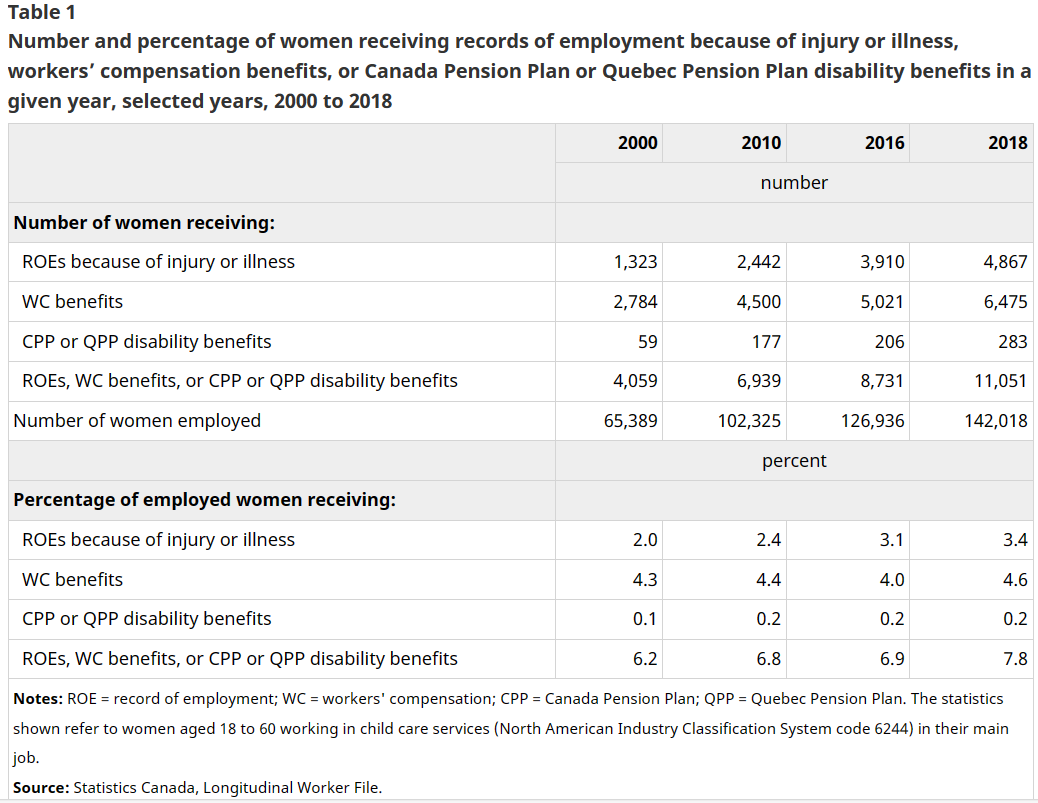
Nearly one in 10 early childhood educators experience absence due to injury, illness: Statistics Canada
December 6, 2023
By
OHS Canada

(Rawpixel/iStock/Getty Images)
About eight per cent of women employed as early childhood educators and assistants (ECEAs) had work absences due to a injury or illness in 2016, according to new data from Statistics Canada.
And that figure rose by about two percentage points during the pandemic in 2020/2021, it said, using data from the Labour Force Survey.
Having such an illness is tied with a greater likelihood of ECEAs leaving the child-care sector during that year and subsequent years. The study found that 14 per cent of them who were ill or injured left the child care sector that year.
The research suggested that efforts to reduce injury or illness-related work absences — or to eliminate them entirely — may reduce turnover in the sector by 1.1 percentage points from a baseline departure rate of 11 per cent.
“This finding in turn suggests that strategies to increase overall employee retention in this sector will likely have to rely on a broader set of tools than those aimed solely at reducing work absences due to injury or illness,” said authors René Morissette and Hanqing Qiu in the paper initially released in June 2023.
Study used ROE: An imperfect but useful measure
The authors used Record of Employment (ROE) based earnings interruptions as a key concept in the study. Specifically, it looked for reductions of earnings related to injury or illness of more than 40 per cent of the insured worker’s normal weekly earnings.
“The ROE will contain no information about the nature of the illness or injury, however. For this reason, ROEs cannot be used to assess whether the earnings interruptions of child care workers are caused by infectious diseases, non-infectious diseases, physical injuries or burnout,” said Morissette and Qiu.
ROEs are also not a perfect measure because they don’t capture all absences caused by injuries or illnesses. For example, a worker with paid sick leave might be able to fully cover short-term absences, thereby avoiding an earnings interruption. Also, workers who do not have paid sick leave and are absent for short duration because of injury or illness may be unlikely to request an ROE if they are not planning on claiming EI — even if they may have been entitled to benefits.
Lastly, workers may experience illness or injury that leads them to receive lower weekly earnings — but not dip into the 40 per cent reduction. In this case, workers will not receive the ROE but may receive benefits from their province’s workers’ compensation board (WCB).
In 2018, for example, 6,475 women aged 18 to 60 employed in the child care services industry received WCB benefits. But the vast majority (5,936) did not receive an ROE because of the illness or injury.
Overall, more than 11,000 women had work absences because of injury or illness, as measured by the receipt of ROEs, WCB benefits, or CPP/QPP disability benefits.

Demographic differences
Highlighting demographic disparities, the study found that early childhood educators and assistants (ECEAs) aged 25 to 34 had a higher likelihood of work absences compared to other age groups.
“Between 12 per cent and 13 per cent of ECEAs aged 25 to 34 had work absences in 2016, about twice the rates of six per cent to seven per cent observed among their older or younger counterparts,” said Morissette and Qiu.
ECEAs with some post-secondary education or with at most a high-school diploma were absent in greater proportions (seven per cent to 10 per cent) than those with a bachelor’s degree or higher education (five per cent to six per cent.)
White ECEAs also reported higher absences (nine per cent) than those who self-identified as Filipino (three per cent to four per cent).